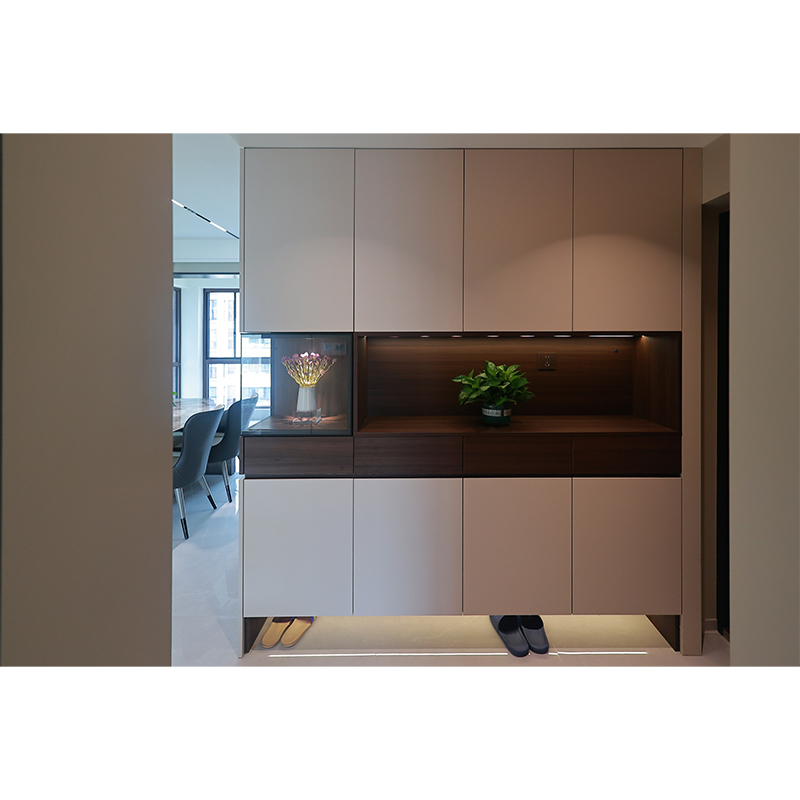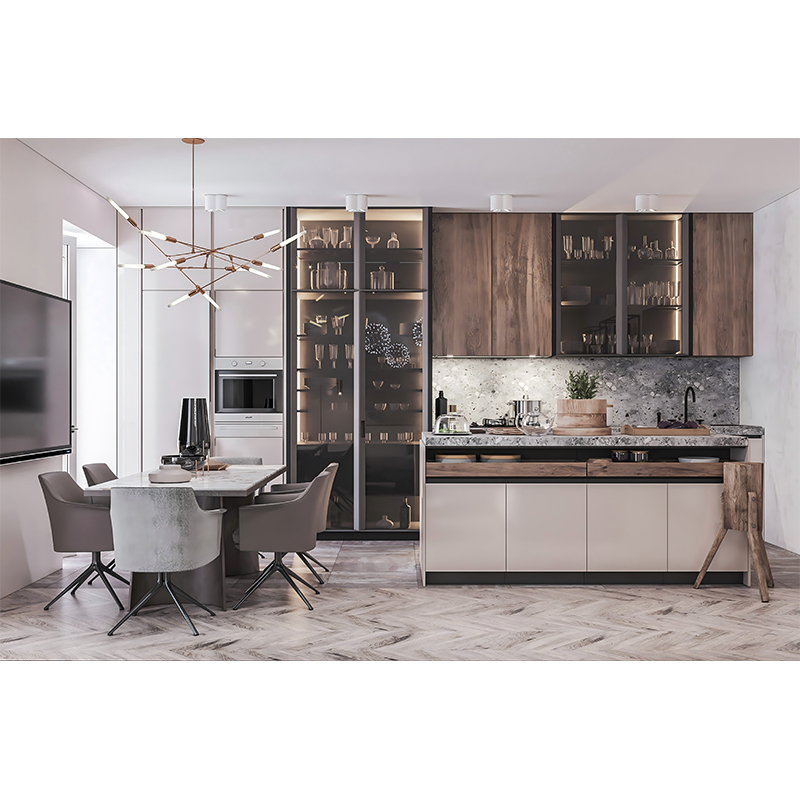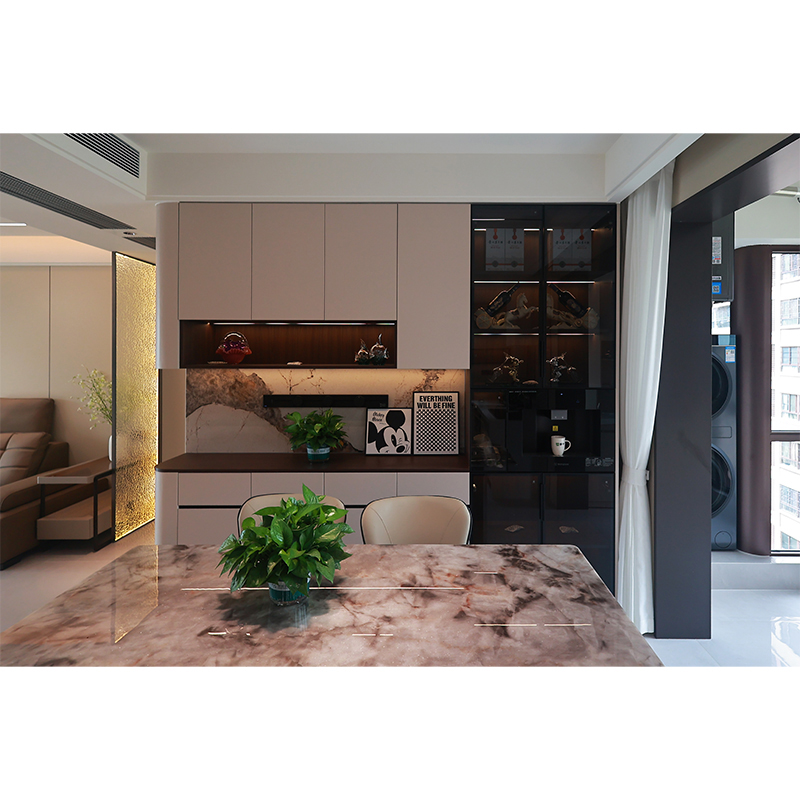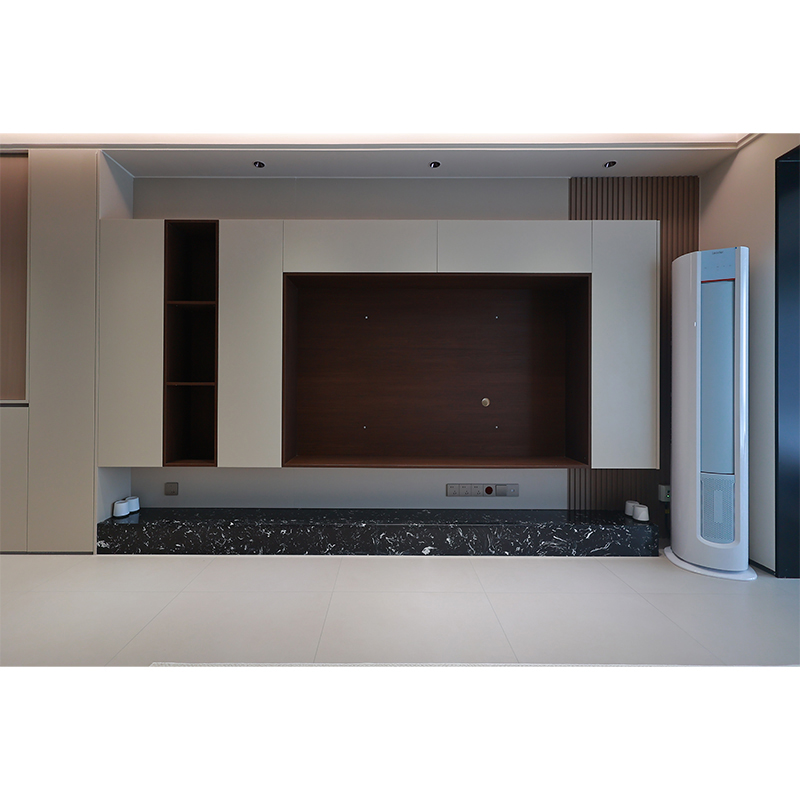How to design beautiful and practical custom cabinets according to the kitchen space layout and user habits?
Release Time : 2025-03-24
The kitchen, as the core area of family life, carries multiple functions such as cooking, dining, and communication. As the "soul" of the kitchen, the design of custom cabinets directly affects the practicality, aesthetics and user experience of the kitchen. How to design beautiful and practical custom cabinets according to the kitchen space layout and user habits has become a topic faced by every family when decorating.
First of all, we must fully understand the layout of the kitchen space. Factors such as the shape, area, lighting, and pipeline direction of the kitchen will affect the design of the cabinets. For example, a narrow and long kitchen is suitable for a straight or L-shaped cabinet layout to maximize the use of space; while a square kitchen can choose a U-shaped or island cabinet layout to increase the worktop and storage space. In addition, the location of windows, door openings, flues, etc. must be considered to avoid the cabinet design affecting ventilation, lighting and daily use.
Secondly, we must have a deep understanding of user habits. Every family has different living habits and cooking methods, so the design of custom cabinets also needs to vary from person to person. For example, families who like baking need larger worktops and built-in ovens; while families who like Chinese stir-frying need stronger fume exhaust systems and high-temperature resistant countertop materials. In addition, factors such as the height of family members and frequency of use need to be considered to design ergonomic cabinet heights and operating procedures.
On the basis of meeting functional requirements, aesthetics is also an important consideration in the design of custom cabinets. The color, material, shape and other elements of the cabinets need to be coordinated with the overall decoration style to create a harmonious and unified visual effect. For example, a simple-style kitchen can choose a solid matte cabinet with hidden handles to create a simple and atmospheric sense of space; while a pastoral-style kitchen can choose a log-colored cabinet with retro handles to create a natural and warm atmosphere.
In order to achieve a perfect combination of beauty and practicality, designers need to fully communicate with users, understand their needs and preferences, and combine their own professional knowledge and experience to provide personalized design solutions. For example, 3D design software can be used to simulate the renderings of different design solutions to help users understand the design solutions more intuitively; on-site measurements and detailed communication can also be used to ensure the feasibility and practicality of the design solutions.
In addition to the formulation of the design plan, the selection of materials and the grasp of the construction process are also crucial. High-quality panels, hardware accessories and countertop materials can ensure the service life and safety of the cabinets; and exquisite construction technology can ensure the detail quality and overall effect of the cabinets.
In short, the design of custom cabinets is not a simple furniture placement, but a systematic project that requires comprehensive consideration of spatial layout, user habits, aesthetics, functionality and other factors. Only through professional design, high-quality materials and exquisite craftsmanship can we create a kitchen space that is both beautiful and practical, adding more convenience and fun to family life.
I believe that as people's pursuit of quality of life continues to improve, custom cabinets will become more and more popular and become the only choice for creating an ideal kitchen space. Let us work together to explore the infinite possibilities of custom cabinets and create a unique kitchen experience for every family!
First of all, we must fully understand the layout of the kitchen space. Factors such as the shape, area, lighting, and pipeline direction of the kitchen will affect the design of the cabinets. For example, a narrow and long kitchen is suitable for a straight or L-shaped cabinet layout to maximize the use of space; while a square kitchen can choose a U-shaped or island cabinet layout to increase the worktop and storage space. In addition, the location of windows, door openings, flues, etc. must be considered to avoid the cabinet design affecting ventilation, lighting and daily use.
Secondly, we must have a deep understanding of user habits. Every family has different living habits and cooking methods, so the design of custom cabinets also needs to vary from person to person. For example, families who like baking need larger worktops and built-in ovens; while families who like Chinese stir-frying need stronger fume exhaust systems and high-temperature resistant countertop materials. In addition, factors such as the height of family members and frequency of use need to be considered to design ergonomic cabinet heights and operating procedures.
On the basis of meeting functional requirements, aesthetics is also an important consideration in the design of custom cabinets. The color, material, shape and other elements of the cabinets need to be coordinated with the overall decoration style to create a harmonious and unified visual effect. For example, a simple-style kitchen can choose a solid matte cabinet with hidden handles to create a simple and atmospheric sense of space; while a pastoral-style kitchen can choose a log-colored cabinet with retro handles to create a natural and warm atmosphere.
In order to achieve a perfect combination of beauty and practicality, designers need to fully communicate with users, understand their needs and preferences, and combine their own professional knowledge and experience to provide personalized design solutions. For example, 3D design software can be used to simulate the renderings of different design solutions to help users understand the design solutions more intuitively; on-site measurements and detailed communication can also be used to ensure the feasibility and practicality of the design solutions.
In addition to the formulation of the design plan, the selection of materials and the grasp of the construction process are also crucial. High-quality panels, hardware accessories and countertop materials can ensure the service life and safety of the cabinets; and exquisite construction technology can ensure the detail quality and overall effect of the cabinets.
In short, the design of custom cabinets is not a simple furniture placement, but a systematic project that requires comprehensive consideration of spatial layout, user habits, aesthetics, functionality and other factors. Only through professional design, high-quality materials and exquisite craftsmanship can we create a kitchen space that is both beautiful and practical, adding more convenience and fun to family life.
I believe that as people's pursuit of quality of life continues to improve, custom cabinets will become more and more popular and become the only choice for creating an ideal kitchen space. Let us work together to explore the infinite possibilities of custom cabinets and create a unique kitchen experience for every family!







